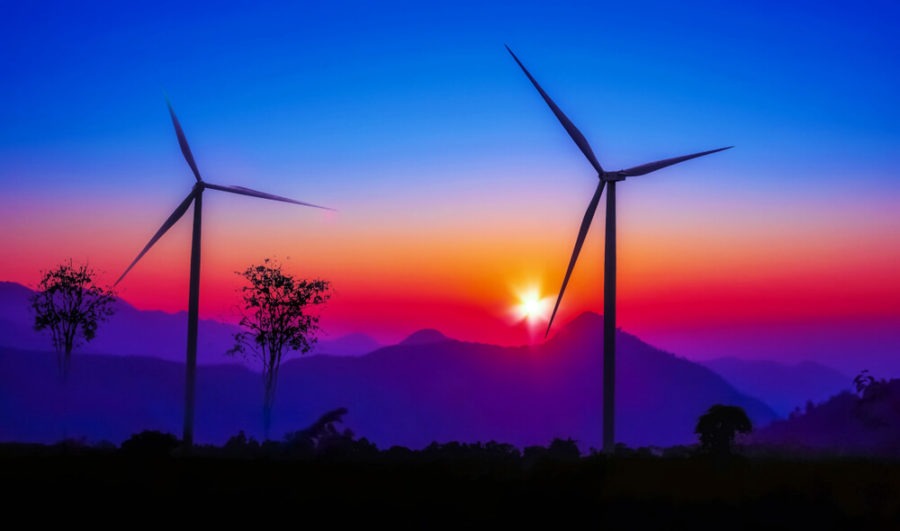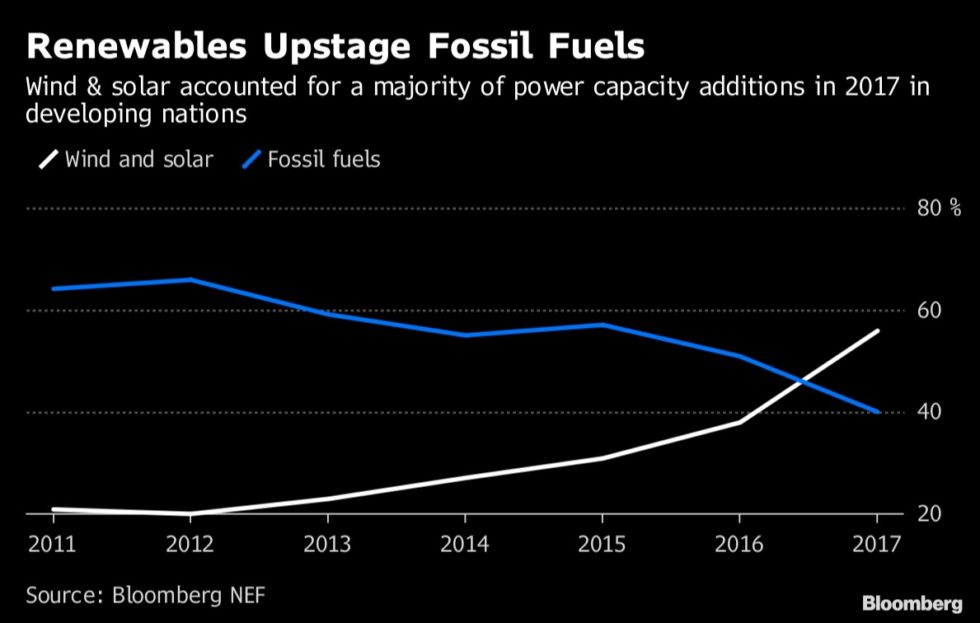Hope floats. 2018 marks remarkable win for Renewables over Fossil Fuels in Emerging Markets

Developing countries added more alternative power capacity than fossil fuel generation for the first time in their history, charging ahead of wealthier nations in the global green energy push, according to Bloomberg NEF’s annual Climatescope survey released yesterday. Wind and solar generation accounted for just over half of the 186 gigawatts of new power capacity in developing nations last year and in the process also added more renewable energy generation capacity than developed economies, with new green additions standing at 114 gigawatts for last year compared with around 63 gigawatts in richer countries.

The report highlights a complete change in trend over the last decade when the world’s wealthiest nations dominated renewable investment and deployment activities. Citing an abundance of natural resources and lower equipment costs as the main factors which made new renewable projects cheaper than fossil plants in developing markets, and in turn, reversing the order of the global trend – which now sees emerging markets lead the renewable push.
“Just a few years ago, some argued that less developed nations could not, or even should not, expand power generation with zero-carbon sources because these were too expensive,” Dario Traum, BNEF Climatescope project manager said in a statement. “Today, these countries are leading the charge when it comes to deployment, investment, policy innovation, and cost reductions.”
– Emerging nations installed more wind & solar than fossil fuel generation in 2017, adding 186GW to their grids w/wind & solar accounting for 94GW.
– Chile ranked #1 as the most attractive market for clean energy investment globally. #climatescope https://t.co/lZPZTijvVr— BloombergNEF (@BloombergNEF) November 27, 2018
| OTHER FINDINGS INCLUDE: |
|---|
|
Emerging markets added the least new coal-fired power generating capacity last year in more than a decade. New coal plants additions stood at 48 gigawatts in 2017, down 38 percent over the previous year and nearly half of the peak in 2015, the report revealed. However, actual generation from coal-fired plants gained 4 percent in developing countries to 6.4 terawatt-hours.
And an additional 193 gigawatts of coal-powered plants are under construction in developing economies, with 86 percent of this capacity planned in China, India, Indonesia, and South Africa.
Of course, in case you missed it, we are comparing capacity additions to generation, which is not a fair comparison perhaps. Even as the world looks at broadly 2040 by when renewables generation should match or exceed fossil fuel generation, that really is the big number to chase eventually. Seeing how quickly the market changed for renewables in the past 3 years, one has to be optimistic that it will take another good cycle of growth, backed by a breakthrough in storage, to help meet the 2040 projections before time. Because, quite simply, climate scientists have made it clear that even 2040 is not early enough.




